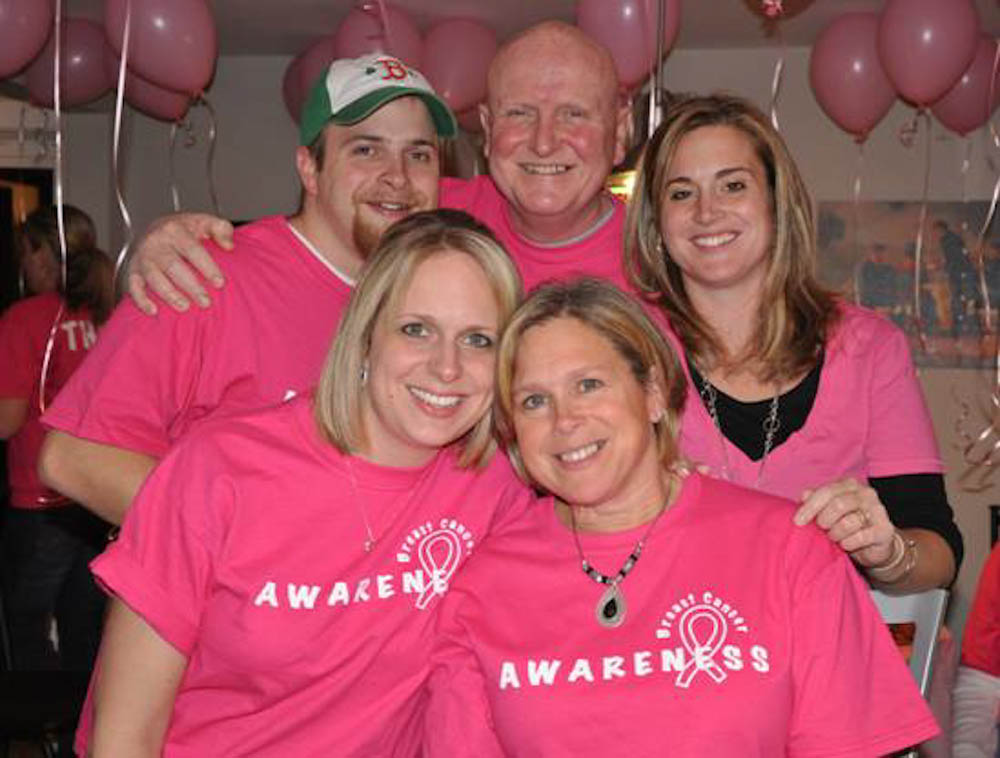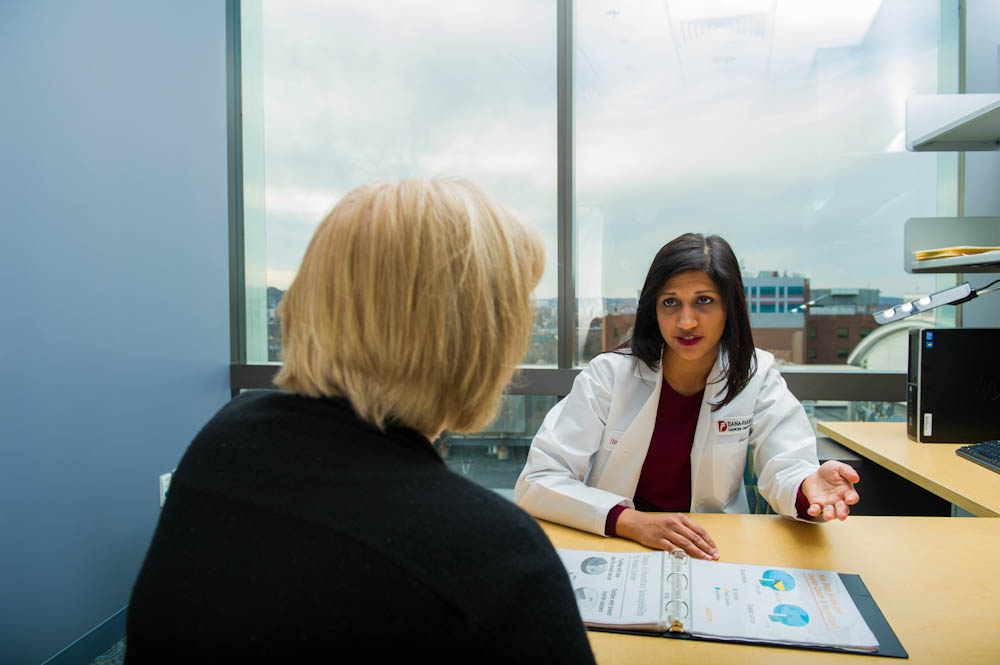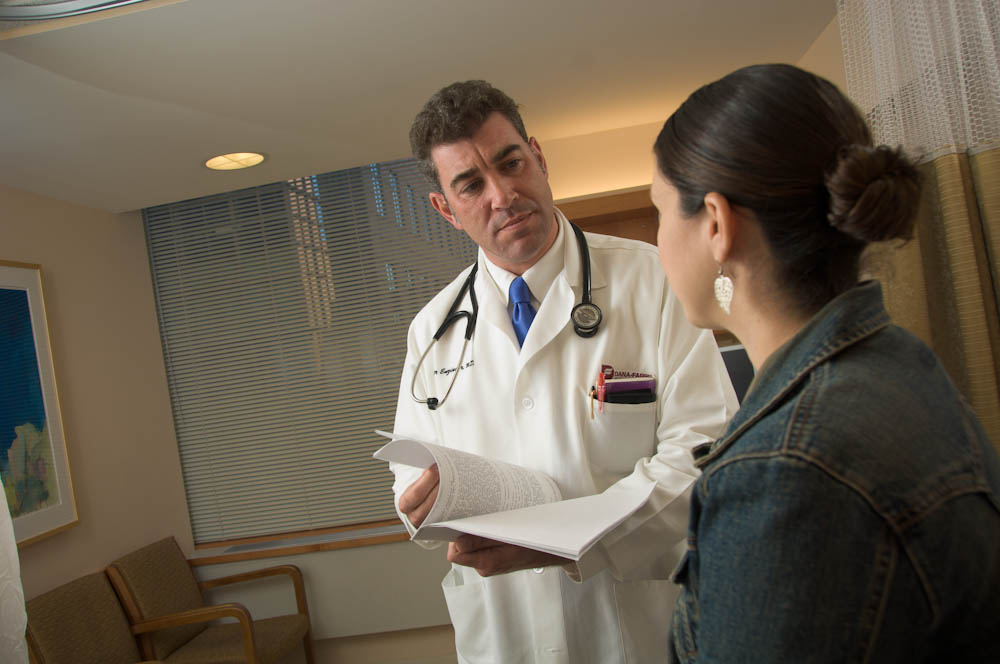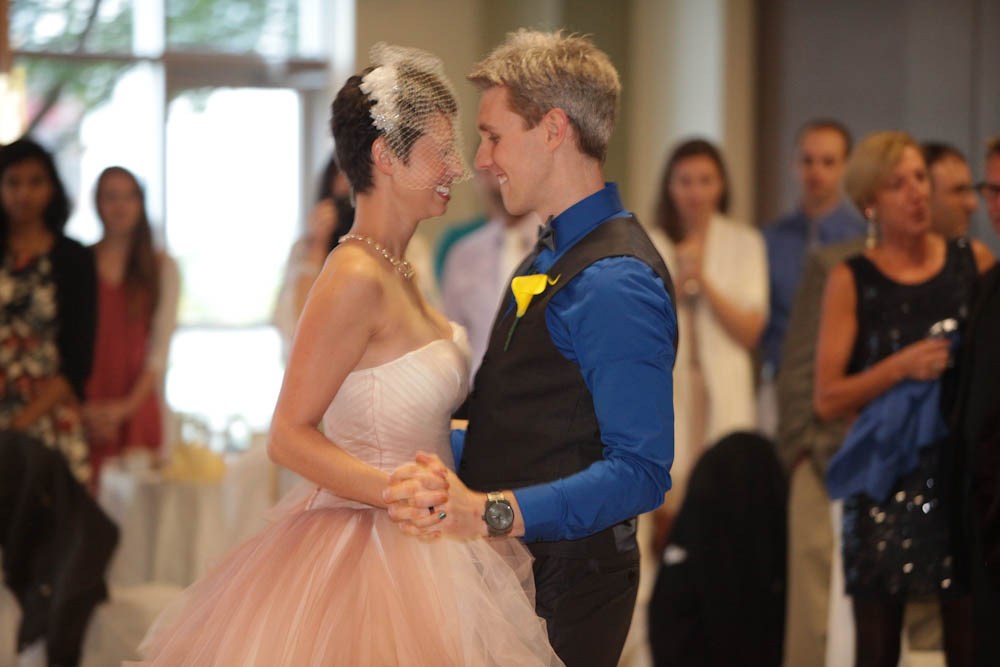By Mike Johnston
My journey into the realm of male breast cancer began with a routine yearly physical exam in May 2009. I had noticed, and felt a twinge of pain in, a lump on my left breast, which I requested my physician take a look at. We conferred and he explained it may be a cyst, but insisted we examine it further, and I am so thankful he did.

The post-chemo party thrown by my sisters
From that moment on, my life started to blur. A mammogram quickly led to an ultrasound, which ended with a biopsy. The follow-up call to my physician confirmed the lump was breast cancer. As I left work early in a daze and waited for my wife, Paula, to get home, I had no idea how to tell her this terrible news. Telling my loved ones about my diagnosis and seeing the pain it caused them was brutal for me, and the worst part of my diagnosis.
After the initial shock wore off, I became determined and focused all of my thoughts on figuring out how to fix this problem. Through my son, Sean, who works in the Longwood area of Boston, I was put in touch with a new patient coordinator at Dana-Farber, and things finally started to slow down and come into focus for me. I called Dana-Farber on Friday and met my medical oncologist, Beth Overmoyer, MD, and surgical oncologist, Faina Nakhlis, MD, the following Monday, who diagnosed me with invasive ductal carcinoma. We created, and immediately began, an intensive treatment plan, which included a mastectomy to remove nine nodes, chemotherapy, radiation, and 10 years of tamoxifen medication.

My wife’s breast cancer awareness tatoo
The world of breast cancer is covered in pink, which many men may shy from, but my family and I embraced it. My sisters threw me a pink-filled party to celebrate the end of my chemotherapy treatment, and my wife even got a breast cancer awareness ribbon tattoo.
Five years later, I am cancer free, and more dedicated than ever to bringing awareness to male breast cancer. It is imperative that men understand that more than 2,000 men in the U.S. will be diagnosed with breast cancer each year. While it’s rare, it does happen and, unfortunately, many men overlook the symptoms until the cancer is advanced. I was fortunate enough to catch mine when I did, before it had spread too far and advanced too much.
Since my experience, I have spoken to many women and men alike who have experienced the life-altering news of a cancer diagnosis, and I am more than happy to aid them through the process like my new patient coordinator guided me.







 It is safe for patients who have not had a
It is safe for patients who have not had a 


 Another area where Dana-Farber research is propelling new advances against lung cancer is
Another area where Dana-Farber research is propelling new advances against lung cancer is 


 The holidays are a time for celebrating with family and friends, but the season can bring challenges for cancer patients and those who have recently completed treatment. The stresses of cancer may leave them feeling out of touch or overburdened with traditional holiday responsibilities. If someone you know is in, or has recently completed, treatment for cancer, consider these tips for helping during the holidays.
The holidays are a time for celebrating with family and friends, but the season can bring challenges for cancer patients and those who have recently completed treatment. The stresses of cancer may leave them feeling out of touch or overburdened with traditional holiday responsibilities. If someone you know is in, or has recently completed, treatment for cancer, consider these tips for helping during the holidays.





 Investigators will monitor Gabriel and the other patients for treatment-related leukemia for 15 years. In the prior European trials—which were the first to demonstrate gene therapy’s potential to successfully cure a disease—leukemia appeared two to five years after treatment. This outcome was one of several events that together slowed clinical progress in gene therapy for many years.
Investigators will monitor Gabriel and the other patients for treatment-related leukemia for 15 years. In the prior European trials—which were the first to demonstrate gene therapy’s potential to successfully cure a disease—leukemia appeared two to five years after treatment. This outcome was one of several events that together slowed clinical progress in gene therapy for many years.








